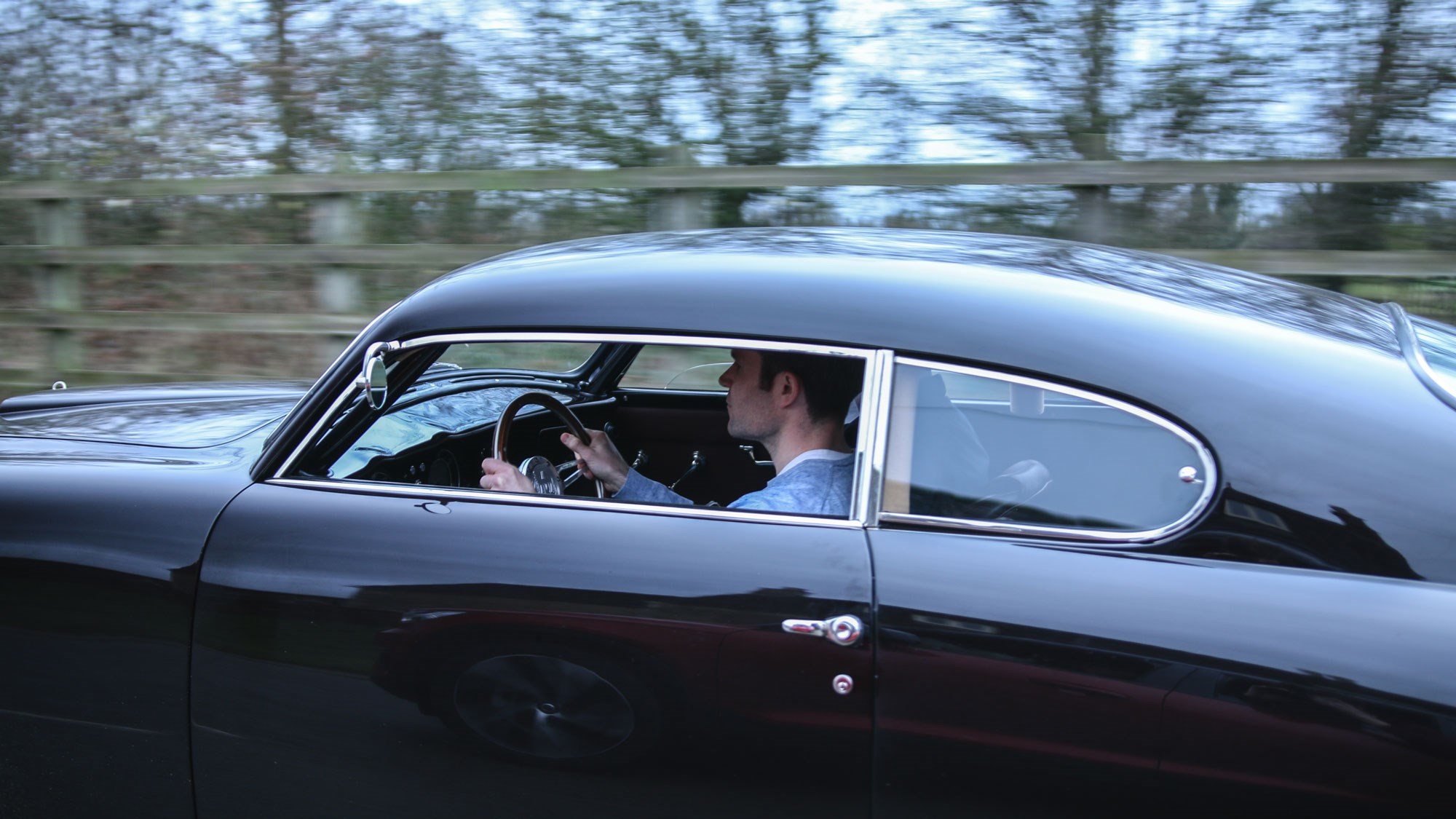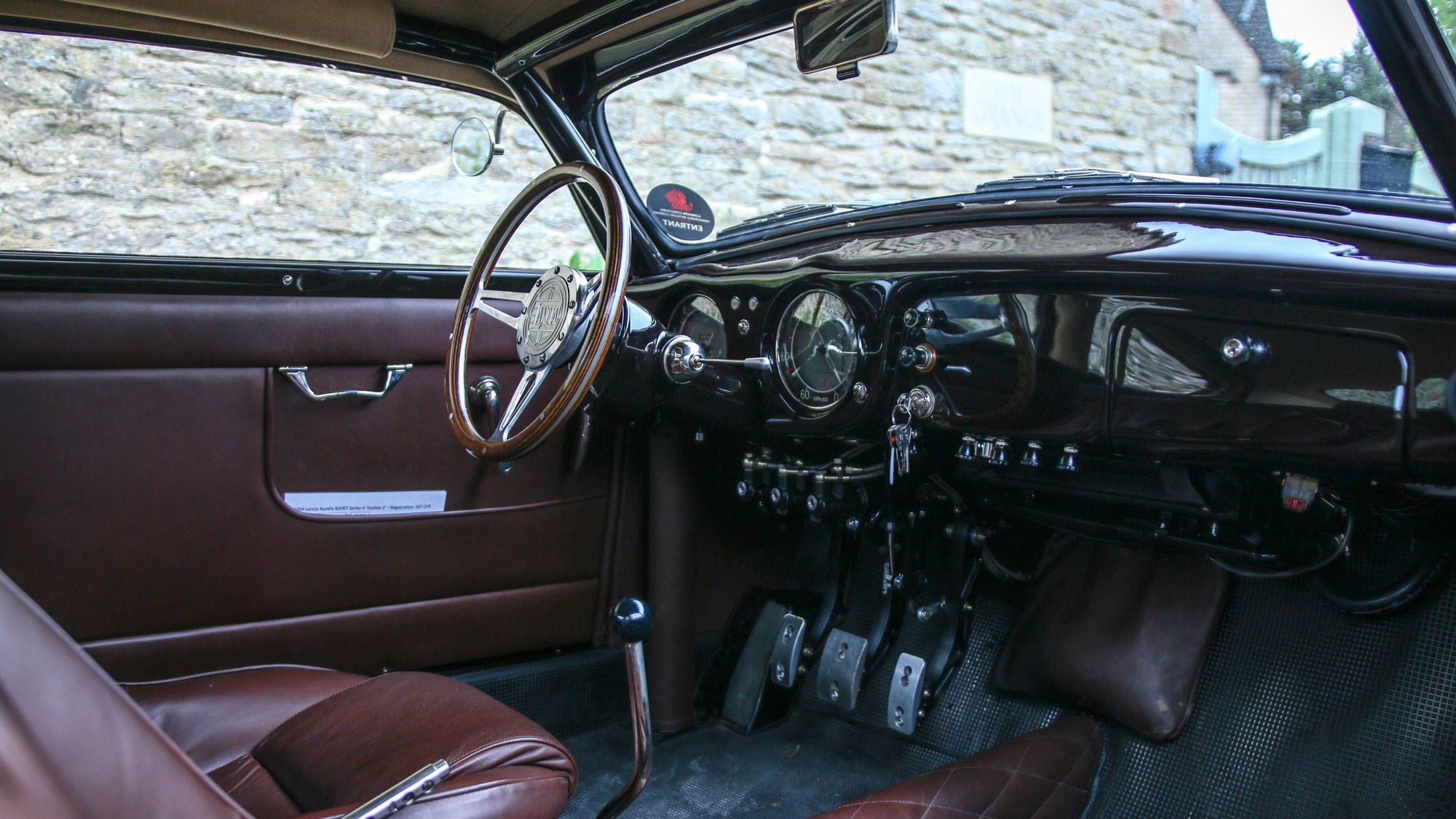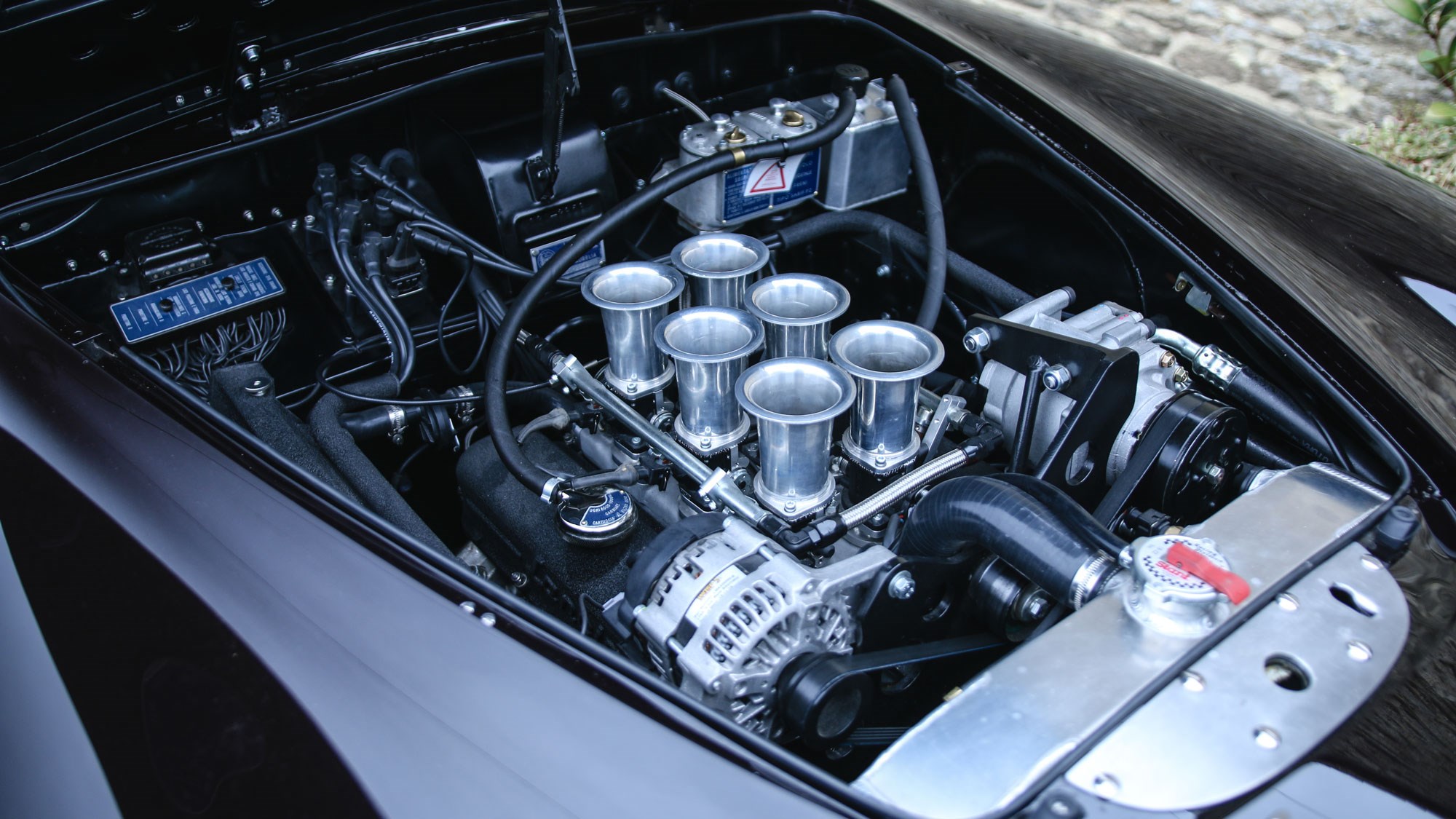► Custom Aurelia is inspired by famous racer
► Bespoke bodywork includes a roof-chop
► Made to order, priced from around £400,000
Perhaps it’s a reaction to concours-strutting trailer queens and purists’ matching-numbers visions of perfection. Maybe it’s just the Max Power generation growing up. Either way, modified classics – from Singer Porsche 911s to the Lancia Delta Integrale Futurista – are suddenly big business. However, there’s a British company with a more traditional approach to bespoke ‘restomods’: one where Mille Miglia pedigree meets SoCal cool. Meet the Lancia Aurelia B20GT ‘Outlaw’.
What makes the Aurelia so special?
The Aurelia was hugely ahead of its time. Launched in 1950, it was the first production car with a V6 engine and radial tyres. A rear transaxle also meant near-perfect weight distribution. These innovations would serve Lancia well in motorsport.
Vincenzo Lancia was a keen racer, but his company didn’t run a works team – preferring instead to support wealthy privateers. One such driver was Giovanni Bracco, who piloted an Aurelia B20GT to second place in the Mille Miglia and a class-win at Le Mans in 1951. After the Carrera Panamericana race that same year, Bracco’s Lancia was sold to a Mexican architect and went missing for more than half a century.

The car was finally discovered in the USA, rust-ravaged but intact. It was painstakingly restored by UK Lancia specialist Thornley Kelham, debuting at Pebble Beach in 2015. One feature, though, had the blazer-clad judges baffled: a hot rod-style roof chop. Photos from the time suggest this happened mid-way through the car’s racing career – no doubt in an effort to improve aerodynamics. But as company co-owner Simon Thornley points out: “It also looked really cool”. The seeds of the Fuorilegge (‘Outlaw’ in Italian) project had been sown.
Ripping up the rulebook
Soon after, an American collector asked Thornley Kelham to build an Aurelia B20GT along the same low-slung lines. As well as the Bracco car, he wanted to pay homage to California’s outlaw culture – an anything-goes scene that sprang from modified Porsche 356s. “We hesitated for about half a second before saying ‘yes’,” smiles Simon.
The process of creating the car took somewhat longer: around 5000 hours. A tatty, barn-find Aurelia was stripped to bare bones, then had three inches sliced from its roof pillars. All four wings were widened, bumpers and rain guttering were removed, the front indicators were hidden inside the headlights and a Nardi scoop was cut into the bonnet. Inside, Alcantara headlining, Porsche 356 Speedster seats and an FIA-spec rollcage cement the functional, road-racer vibe.
This wasn’t merely a cosmetic makeover, though. A Lancia Flaminia V6 was fitted, bored out to 2.8 litres with spikier cams and a custom exhaust. Power leapt to 175bhp, versus 118bhp in a standard Aurelia.

The steering box was swapped for a rack-and-pinion setup, brakes were uprated to discs all-round and the sliding pillar suspension was nitrogen-charged.
When the Outlaw made its show debut, it caused quite a stir. “We had no idea how it would be received,” explains Simon, “but we were blown away by the response. Two people made orders right there, another two soon afterwards”. Today, at the Thornley Kelham workshop in Gloucestershire, the fifth and sixth Outlaws are currently in production.
The car I’m driving is number two, currently on vacation from its home – appropriately enough – in California. Seeing it in the metal, it’s obvious why it wowed the concours crowds. It’s low, rakish and raffish, with classic curves draped over cartoonish proportions. Wheels are 15in Jaguar D-Type-style alloys, while the custom paint looks brown in some lights, purple in others. “It was colour-matched to an aubergine,” Simon reveals.
The details draw you in, too. The bonnet is locked shut with intricate alloy catches, door mirrors are perched delicately on the A-pillars and the flip-up Monza fuel filler looks achingly beautiful. Much of the brightwork has been deleted, or finished in polished nickel rather than chrome. Panel gaps are perfect and the finish is faultless.
Like Dennis Hopper on a chopper
You might expect the Lancia to offer Lilliputian levels of headroom, but its seats are mounted almost on the floor. The result is a driving position not unlike a chopper motorcycle: legs outstretched and arms slightly aloft. The rear seats are rendered useless by the rollcage, although relocating the brace bar behind the rear bulkhead can remedy this. “We tailor each car to how the customer wants it,” says Wayne Kelham, the other half of the TK partnership.

All Lancias were right-hand drive until 1954 (despite Italy switching to driving on the right some 30 years earlier) so this US-bound Outlaw was converted to LHD with a fibreglass dashboard that faithfully replicates the original. The elegant dials are masterpieces of Art Deco understatement, the only additions being a modern fuel gauge and air conditioning unit – both hidden in the glovebox.
After five minutes faffing around with the four-point harness, we’re finally ready to go. I twist the key one notch to the right and push it inwards. The V6 coughs cantankerously into life then settles to a impatient idle, the chattering of the valvetrain slowly subsiding as the oil warms through. I slot the slender, Ferrari-style wand into first and lift the weighty clutch. The capillary lanes of the Cotwolds await.
The seduction of induction
The original Outlaw had triple twin-choke Webers, but this one has been converted to fuel injection, which improves low-speed response and liberates an extra 10bhp. Throttle response feels eager and there’s ample torque to unsettle the tall, narrow Avons on damp December roads. Even so, this engine does its best work in the upper reaches of the rev-range, coming on-cam from around 3,500rpm.
Having six throttle bodies also reshapes the soundtrack, the slurping of thirsty carburettors traded for a breathy growl that swells to a buzzsaw snarl. Thornley Kelham fits extra sound deadening inside the cabin, although you’d hardly know it. Glorious induction noise overwhelms everything. It’s raw and razor-sharp: more racing car than gentleman’s GT.

The unassisted steering relays every ripple in the road, occasionally kicking back over mid-corner bumps, while both the four-speed ’box and brakes need a deliberate shove. Grab the Outlaw by the scruff, though, and everything suddenly sharpens into focus. There’s an honest, mechanical tactility here that’s missing from most modern cars.
Outlaw, but not a renegade
Hustling the Lancia along hedge-lined lanes, I almost convince myself I’m driving the Mille Miglia. All that’s missing are sunshine and suicidal Italian spectators. True to its transaxle layout, it feels beautifully balanced, turning in keenly and tenaciously holding its line. Despite a 60 percent power hike, it feels capable of more.
Ride quality on the sliding pillar suspension – used by Lancia from 1922 – is firm and fidgety around town, then smooths out with speed. You feel the car settle into a turn, sense the steering weight up, then use the throttle to coax it out the other side. There are no electronic aids and no excuses, but a communicative chassis helps put you at ease. This particular Outlaw plays by the rules.
No self-respecting classic car review is complete without reference to thin pillars and brilliant all-round visibility, of course. Not here. The Aurelia’s tiny mirrors and near-horizontal rear window mean you concentrate on the road ahead rather than worrying about what’s behind. I suspect Giovanni Bracco did the same.

Lancia Aurelia B20GT ‘Outlaw’: verdict
You’ve probably made your mind up about the Outlaw already. Some hate the idea of turning an aristocratic classic into a hot rod, no matter how artisan the build process or period-correct the modifications. Others love the idea of sticking two fingers up to convention. When I posted photos of the Lancia on Twitter, responses were unequivocally one or the other: there was no middle-ground.
That’s perhaps the point of a car like this. But the Outlaw is more than merely a conversation piece on a concours lawn. Like a Singer 911, it adds spice without diluting the original recipe. It’s a homage to one of Lancia’s greatest racers, a work of art in hand-shaped steel – and a life-affirming driving machine to boot.
If you want one, you’ll need circa. £400,000. And you’d better be quick: Thornley Kelham plans to build two more (eight in total) before moving on to its next project. “We’ve toyed with the idea of converting Lancia Fulvias to rear-wheel drive,” reveals Wayne. Nothing to upset the purists there, then. Nothing at all..